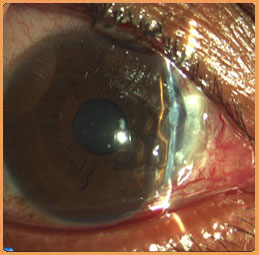- Home
- About Us
- Meet Our Team
- Facilities
- Services
- Expertise
- Anterior Lamellar Transplants
- Artificial Cornea
- Cataract Surgery In Children
- Complex Cataract Surgeries
- Corneal Infections
- Corneal Transplants In Children
- Dry Eye Disorders
- Keratoconus
- Lasik And Refractive Surgery
- Ocular Allergies
- Ocular Inflammation
- Ocular Surface Reconstruction
- Pterygium Management
- Secondary Iol Implants
- Sutureless Corneal Transplants
- Patient Information
- Academics
- Darshan Activites
- Contact Us
PTERYGIUM MANAGEMENT
The word “pterygium” means “wing shaped”. This is a condition in which there is a triangular encroachment of blood vessels and fibrous tissue on the cornea. Although the exact cause is unknown, it is believed to be due to ultraviolet light induced changes on the ocular surface.
Apart from the cosmetic blemish due to the presence of this growth on the cornea, the eye tends to be more irritable, with frequent episodes of pain, redness and tearing. With gradual progression of the lesion, alterations in the shape of the cornea and or obstruction of the visual axis can result in poor vision.
This is a condition that is relatively common in South India, due to the geographical location and climate. Unfortunately, the traditional surgical approach of just removing the growth has a very poor success rate – the lesion tends to recur in almost 80 to 85% of those undergoing such a procedure.
Recent improvements in surgical technique allow the removal of even large pterygia with good success. Such techniques require the use of a graft of conjunctival tissue from another part of the ocular surface. This can be sutured in place or in another recent advance, stuck in place using fibrin glue – enhancing the speed of surgery and postoperative patient comfort. With these approaches, the surgical success rate can be as high as 95 to 98%.
In more advanced lesions, other surgical adjuncts can be used to aid success. These include the use of a chemical, mitomycin C, to reduce the growth of fibrous tissue, and amniotic membrane transplantation, if the removal of the pterygium results in a large bare area on the ocular surface.
The most recent advance in the management of this condition is the use of a glueless, suture less approach, using the patient’s own blood to stick the graft in place. In advanced cases, with corneal scarring, the use of a lamellar corneal graft may be required to restore vision.
Early Pterygium
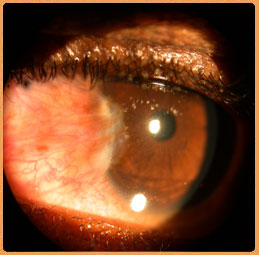
Advanced pterygium
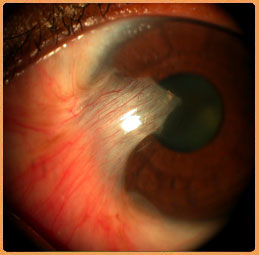
Fibrin Glue for Pterygium
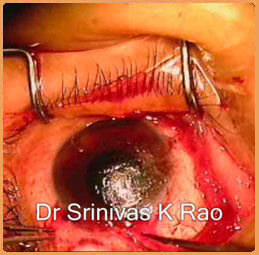
After Pterygium Surgery
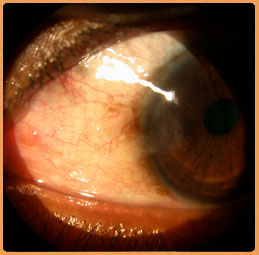
Infection After Pterygium Surgery
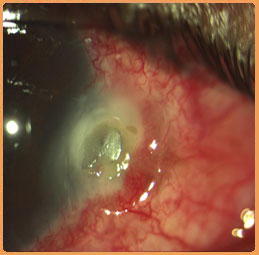
After Surgical Treatment
